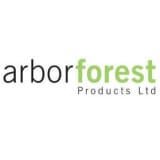This informal CPD article, ‘A guide to creating a weatherproof deck’, was provided by Arbor Forest Products, one of the largest independent timber importing businesses in the UK, providing outstanding service and distribution to merchants.
Summer has drawn to a close and with that comes the end of the traditional decking season. However, with decking representing a sizeable investment, it’s important to design decks that can be enjoyed throughout the year, even in the colder and darker months. That’s especially the case when creating a deck for a commercial space, where it may be used as a smoking area or other all-weather outdoor space. When quality decking boards are used and properly maintained, with the addition of useful extra features, it’s easy to create a deck that will be suitable for all seasons.
Beneath the surface
Whether a deck comprises composite decking boards or more traditional wood alternatives, the substructure will typically be made of timber – which is susceptible to the harsher elements that come with winter weather. Water can seep between decking boards, leading to mould or rot as it reaches the timber joists.
With this in mind, it’s vital to waterproof the substructure using joist tape, which is also known as flashing tape. Joist tape is a durable and flexible adhesive solution for protecting a deck’s foundations, as it provides a watertight seal for the timber. There are several types of joist tape available on the market, however butyl tape offers the best all-round benefits. This rubber-based tape boasts high adhesion with quick curing times, combined with durability and a lower price point than many alternatives.
To the core
While joist tape provides great solution for protecting the deck’s integrity, it’s also important to consider the impact of the weather on the material of the decking boards. Traditional boards made from wood are more vulnerable to the colder, wetter months, meaning they would require significant maintenance to keep them in the best possible condition – time and money that the deck-owner will have to factor in when planning the outdoor space. Again, this is especially relevant for commercial decks, where the deck would need to be closed to customers to allow for cleaning, sanding, and re-staining to take place.
Composite decking can provide a low maintenance yet durable alternative – but only when certain decking profiles are used. As composite decking continues to experience exponential growth in popularity, an increasing number of cheaper products are available on the market. However, it’s important to note that these won’t necessarily provide value for money in the long term, as these boards often comprise undesirable core profiles. It’s particularly important to avoid hollowcore and uncapped composite decking boards, as these are subject to structural failure and are easily damaged by weather conditions. This means they are not often suitable in high footfall areas as the constant wear and tear would quickly become a problem.
There are a number of higher quality alternatives from trusted brands available on the market to suit a variety of budgets, however solid and capped boards remain the gold standard of composite decking due to their durability. For peace of mind, always check the manufacturer’s warranty – leading brands usually offer a residential warranty of up to 50 years and a commercial warranty of up to 10 years, even when decks are exposed to harsh weather.
While composite decking requires minimal maintenance compared to traditional timber decking, it’s still a good idea to clean it twice a year – with autumn and spring the most popular times to do this.
Light the way
When it comes to creating a year-round deck, lighting is an ideal addition. Not only does lighting create ambience, it’s also a great way to increase the safety of a deck so that it can be enjoyed through dark evenings. Lighting can be incorporated into the design of a new deck prior to installation, or complementary lighting products from leading brands can be retrofitted to existing decks.
Wrap up
There are a number of other design elements that can be incorporated into a deck to help users enjoy it in all weathers, such as the addition of canopies and other forms of shelter. However, when it comes to enjoying a deck throughout autumn and winter, warmth is key. There are so many ways to be creative when it comes to keeping warm while using a deck, and fire pits are currently a top trend. Of course, it’s important to ensure any fire source is raised to avoid overheating the decking boards. Alternatively, for higher budget installations, the addition of a hot tub is another great way to tempt people outside to enjoy the deck in any weather, at any time of year.
We hope this article was helpful. For more information from Arbor Forest Products, please visit their CPD Member Directory page. Alternatively, you can go to the CPD Industry Hubs for more articles, courses and events relevant to your Continuing Professional Development requirements.













